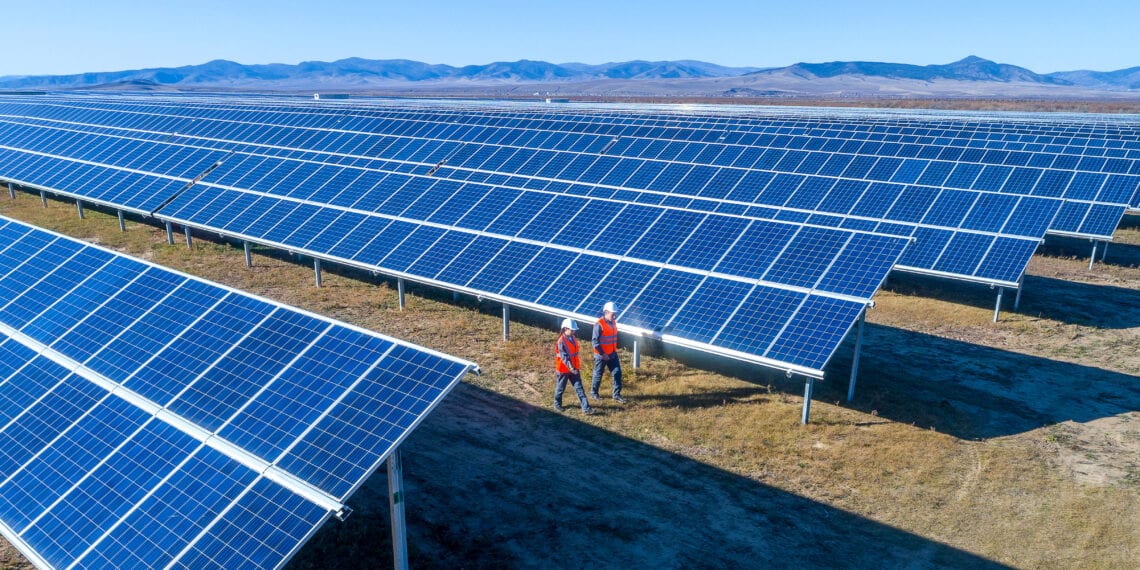Solar – it is the “clean energy” source that just about anyone can utilize at home. It is also the clean energy source that most experts are forecasting is set to have a period of significant, sustained growth.
The International Energy Agency (IEA) recently made a significant re-adjustment to its short-term predictions for solar demand. The IEA’s updated forecast suggests Solar photovoltaic (PV) development will continue to break records, with annual additions reaching 162 GW by 2022 – almost 50% higher than the pre-pandemic level of 2019.
The US Energy Information Administration (EIA) now believes solar will account for 39% of all new U.S. electricity generation capacity in 2021, surpassing wind for the first time. The EIA also projects the electric power sector will add 15.4 gigawatts (GW) of utility-scale solar generating capacity in 2021.
Strong growth in the U.S.
In a similar vein, IHS Markit says that despite the supply and demand challenges that solar PV faced in 2020, the U.S. market had its largest installation year to date. According to IHS Markit, over 22 GWdc of U.S. solar PV installations were completed in 2020, with utility-scale projects representing 77% of that volume.
The firm added that a renewable-friendly administration, an extended ITC schedule, increasingly competitive pricing, and a massive late-stage project pipeline will continue to drive strong growth for the U.S. in 2021.
IHS Markit forecasts that the U.S. will install over 20 GWdc of utility-scale PV installations in 2021, making it another banner year for solar. Notably, the utility-scale segment already has over 11 GWdc of projects already under construction in 2021.
Contributing factors to the growth of U.S. solar this year includes the transition of coal states to renewable generation in the near-term; states like Illinois, Virginia, Pennsylvania, and Kentucky have large PV pipelines in 2021 through to 2025.
Moreover, continued corporate procurement for PV generation and aggressive net zero goals by large utilities across the country will ensure growth will be maintained for solar in the next five years.
Meanwhile, international analyst firm Research and Markets estimates that the global solar market will reach US$267.747 billion in 2026 – up from US$68.579 billion in 2019.
The implications for silica
Of course, this type of demand growth has to filter back down to the critical minerals that are needed in the construction of new solar panels.
One of those critical minerals is silica, which has been in particularly high demand.
In announcing the recent signing of a new MoU for offtake from its Galalar Silica Project in far north Queensland, ASX-listed Diatreme Resources Limited (ASX: DRX) highlighted the strong Asian demand for its premium‐quality silica product amid the solar energy boom.
CEO, Neil McIntyre, said the MoU agreement with Jiangxi Kangjia New Material Technology Co. Ltd adds to previous MOU’s signed with Fengsha Group and Wan Zhong Investment Group, demonstrating the strength of demand from Asia’s top solar PV market for Diatreme’s premium silica product.
Queensland Minister for Resources, Scott Stewart, is another who is predicting a strong Silica market going forward.
Speaking from the Cape Flattery Silica Mine in the Australian State, Mr Stewart said the project is one of the highest producers of silica sand in the world.
“Cape Flattery Silica Mines exports an impressive three million-plus tonnes per annum of high-quality silica sand.
“Silica sand is the primary raw material used in making glass products, and demand for high quality silica has been soaring for the production of ultra-clear glass for high-tech applications such as solar panels, smart phones, fibre-optics, TV flat screens, and LED lights.”
He added that the mine is a key in meeting increasing global demands for high-purity silica sand used for high-tech manufacturing and renewables.
Shortage in supply
Private exploration specialist firm Allup Sand Pty Ltd confirmed there is a global shortage of silica sand, owing to a number of export bans and the increased demand for sourced sand which is both environmentally and socially responsible.
The company noted that sands found in deserts are unsuitable for the purposes the market requires, as it is shaped by wind rather than water, has resulted in a further lack of supply.
It forecast that global consumption of industrial silica sand is expected to climb 3.2% per year through to 2022. Asia-Pacific growth is tipped to be higher than global growth and is expected to be around 5-6% per year.
Ongoing economic and infrastructure development in the Asia-Pacific region will drive this growth.
According to Allup Sand’s market assessment:
- The Asia-Pacific region is expected to remain the largest regional consumer of industrial sand through to 2025, supported by the dominant Chinese market
- Asian markets are said to produce in excess of 75% of speciality glass products, including thin film transistor glass used in modern plasma and LCD technologies and solar products
- In addition to China, the industrial markets in Japan, South Korea, Taiwan, Vietnam, Indonesia, and The Philippines
remain strong
Research and Markets is also bullish about the immediate future of the global precipitated silica sand market.
It reported that in 2019, Asia-Pacific’s precipitated silica market accounted for a market value of around US$900 million and is expected to grow at a CAGR of 10.3%, over a forecast period of 2021-2027.
Research and Markets said the growing application of precipitated silica in various end-use industries, rapid industrialization and urbanization, and the growing income of the consumers are all expected to drive market growth.
Global demand for precipitated silica is further expected to increase over the forecast period owing to the technological innovation concerning the formulation of advanced precipitated silica for high-performance in end-use applications.












